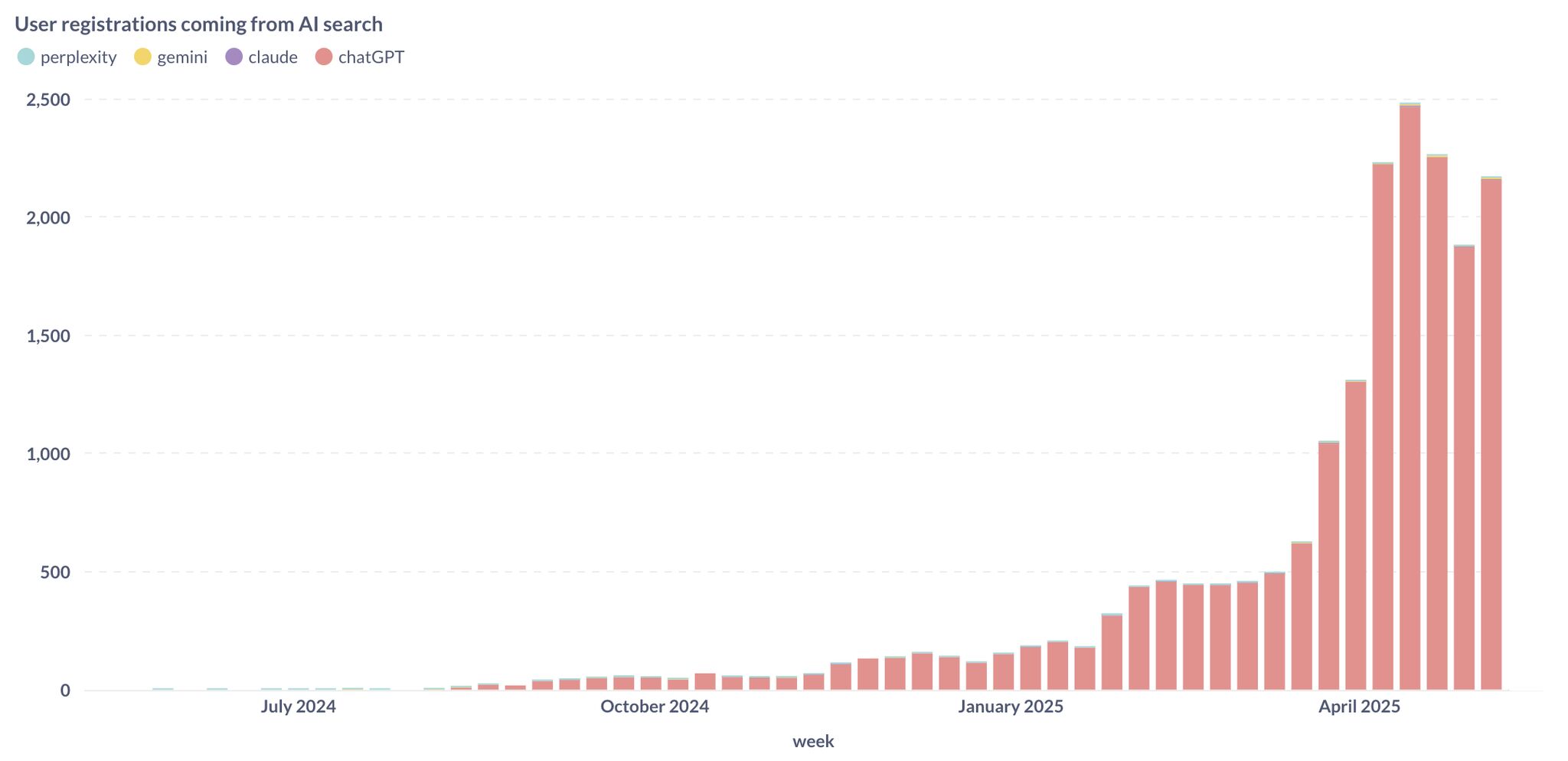The Shift Has Already Begun: How AI Is Redefining User Acquisition


AI search is no longer a future trend.
It's already here, and it's quietly transforming how companies acquire users.
Large language models (LLMs) and AI-driven search would change the rules of online discovery.
Forward-thinking companies are already seeing measurable and accelerating results from AI-based user acquisition.
Here are three standout examples: Vercel, Webflow, and Tally, that prove the shift isn’t on the horizon. It’s already underway.
In December 2024, only 1% of new sign-ups to Vercel came from AI-driven sources like ChatGPT.
By May 2025, that number had climbed to 4.8%. Just one month later, in June 2025, it surged to 10%.
That’s not a blip. That’s exponential growth in a core acquisition channel, without paid ads, without SEO games.
This shows what happens when a product becomes the best answer to the right AI prompt.

Webflow has also seen a dramatic shift. In October 2024, just 2% of new users came from AI channels. Fast forward to June 2025, and that number is now 8%.
They didn’t stumble into this success, they optimized for it.
Through smart adaptation of their content strategy for LLM-based discovery, Webflow made itself easier for AI systems to recommend.
Tally, the popular no-code form builder, has gone even further. According to co-founder Marie Martens, AI search is now Tally’s single biggest acquisition channel, surpassing every other source, including SEO and social.
"AI search became our biggest acquisition channel ChatGPT Perplexity co are now driving the majority of our new signups" (cit. Marie Martens Co-founder di Tally)

Tally’s success highlights what’s possible when your product is discoverable, trustworthy, and relevant enough to be surfaced consistently in LLM responses.
These are not isolated success stories. They are early signs of a major shift: AI is becoming the new front door to the internet.
More users are asking tools like ChatGPT for product recommendations. And LLMs are responding with answers that shape real decisions.
If your product isn’t optimized to be found and recommended by AI, you're missing out on one of the fastest-growing acquisition channels.
Now is the time to make your product LLM-discoverable.
We built RankWit platform for this moment.
Our platform helps make your product more discoverable and recommendable by AI agents and LLMs—ensuring you're part of the answers users are already asking for.
The shift is happening. Vercel, Webflow, and Tally are riding it.
Are you?

GEO requires a shift in strategy from traditional SEO. Instead of focusing solely on how search engines crawl and rank pages, Generative Engine Optimization (GEO) focuses on how Large Language Models (LLMs) like ChatGPT, Gemini, or Claude understand, retrieve, and reproduce information in their answers.
To make this easier to implement, we can apply the three classic pillars of SEO—Semantic, Technical, and Authority/Links—reinterpreted through the lens of GEO.
This refers to the language, structure, and clarity of the content itself—what you write and how you write it.
🧠 GEO Tactics:
🔍 Compared to Traditional SEO:
This pillar deals with how your content is coded, delivered, and accessed—not just by humans, but by AI models too.
⚙️ GEO Tactics:
🔍 Compared to Traditional SEO:
This refers to the signals of trust that tell a model—or a search engine—that your content is reliable.
🔗 GEO Tactics:
🔍 Compared to Traditional SEO:
AI Search Optimization refers to the practice of structuring, formatting, and presenting digital content to ensure it is surfaced by AI systems—particularly large language models (LLMs)—in response to user queries.Choosing a clear, unified name for this emerging field is crucial because it shapes professional standards, guides tool development, informs marketing strategies, and fosters a cohesive community of practice. Without a consistent term, the industry risks fragmentation and inefficiency, much like early digital marketing faced before "SEO" was widely adopted.
GEO (Generative Engine Optimization) is not a rebrand of SEO—it’s a response to an entirely new environment. SEO optimizes for bots that crawl, index, and rank. GEO optimizes for large language models (LLMs) that read, learn, and generate human-like answers.
While SEO is built around keywords and backlinks, GEO is about semantic clarity, contextual authority, and conversational structuring. You're not trying to please an algorithm—you’re helping an AI understand and echo your ideas accurately in its responses. It's not just about being found—it's about being spoken for.